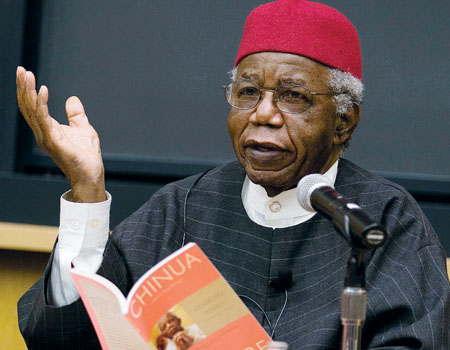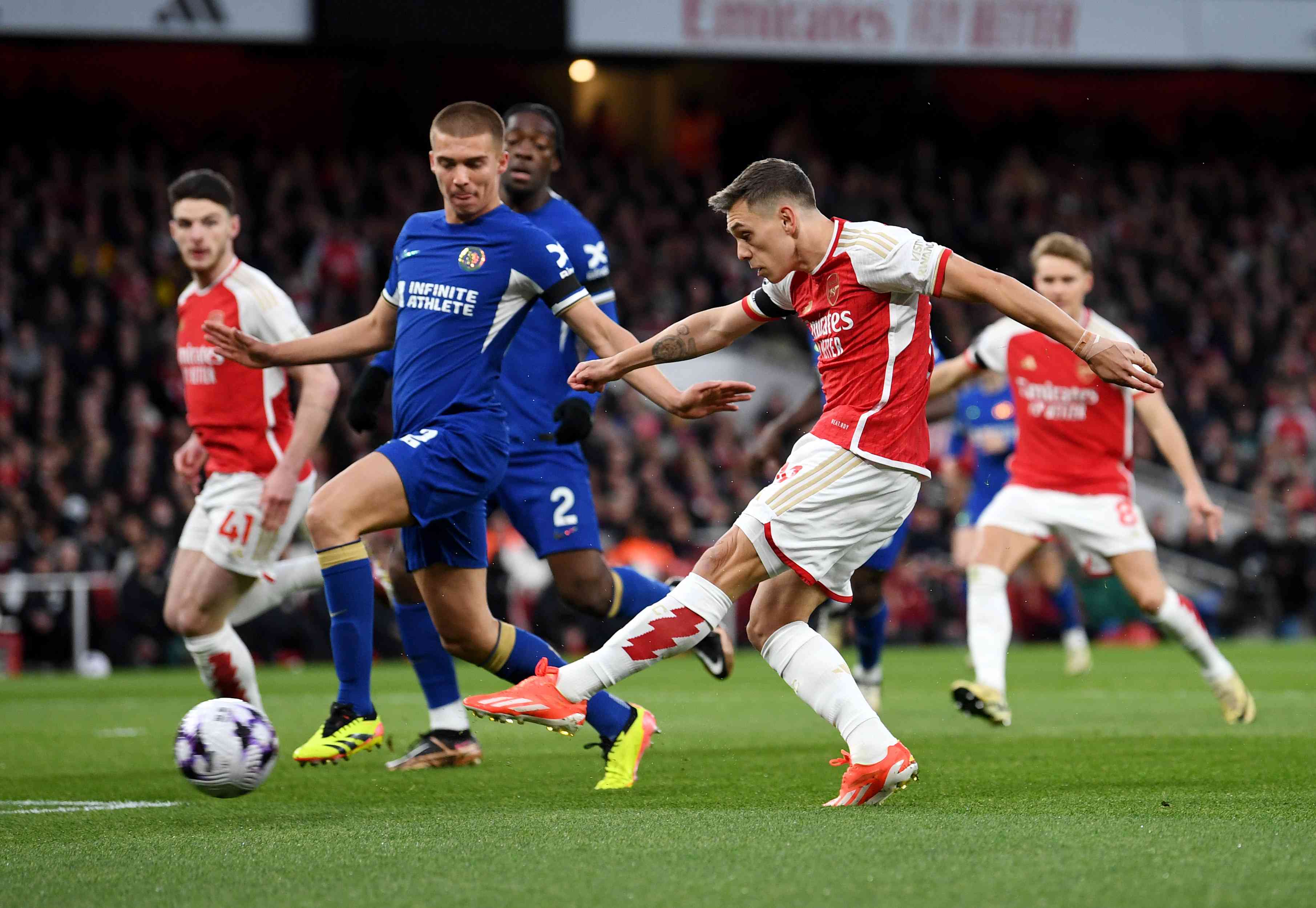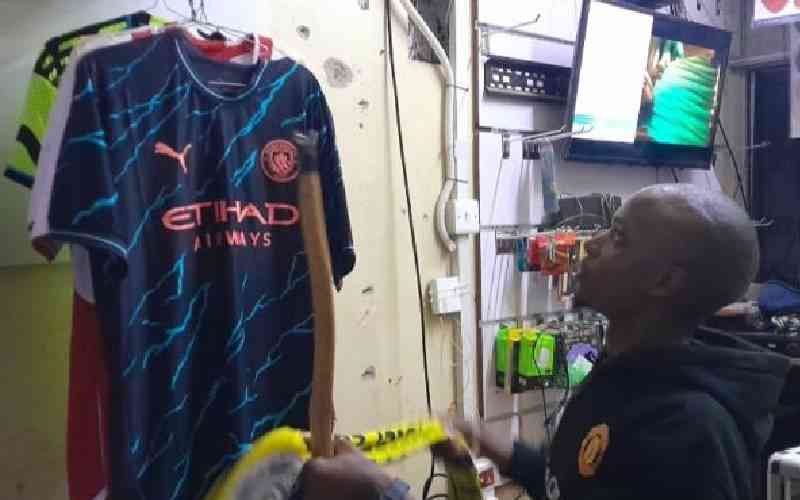 |
|
The late Nigerian author Chinua Achebe. [PHOTOS: COURTESY/STANDARD] |
By ZAKAYO AMAYI
In recent years, there have been unending debates concerning the selection of set books used in schools.
Apart from the Kenya Institute of Education’s (KIE) biased mode of choosing the texts, there has also been the issue of content. Some well-penned books such as Witi Ihimera’s The Whale Rider and Chinua Achebe’s A Man of the People have been criticised by Kenyans, including those in the diaspora on many occasions. These critics include Evan Mwangi, a renowned literary scholar at Evanston University in the US.
The Whale Rider has been criticised because it touches on non-normative sexual practice while Achebe’s novel has been accused of discussing things to do with sex and use of condoms.
In a recent article, “We Stand to Lose in Skewed Set Books Selection,” published in the Standard On Saturday, Abenea Ndago indicated that books read in school should be selected with utmost care so as to enhance ethnic and culture awareness and thus promote national cohesion.
I agree with the writer. However, I must add that due to modernism, our culture is changing rapidly and our children need to be informed of the same and cautioned against ‘bad’ modern culture.
It is worth noting that despite many criticisms on what is consumed in schools, children and the youth of this generation are controlled by a different culture influenced by the media, foreign culture and technological advancement. For example, in many homes, parents and guardians allow young people to watch sexually explicit movies and other television programmes apart from letting them read all kinds of literature.
There are those who have access to the Internet and are victims of pornography. It is therefore absurd to attempt to prevent them from reading certain books that discuss pertinent issues such as sex, marriage and love in a less explicit manner.
In my view, I recommend that urban and all other literatures that focus on modern day problems should be read in schools without bias as long as they are not pornographic.
Urban literature is also known as street literature and is normally set in urban or peri-urban landscapes. Moreover, it is literature that is much defined by the culture of its characters as well as the setting. The characters in urban literature are knowledgeable, all knowing, and at times, morally loose and ungodly as compared to characters from other literatures.
City life
Like all other postmodern writings, urban literature has a very long history. This is a genre of literature written by and for African Americans before it percolated to Africa and other regions across the world. For a very long time, African Americans, who had been ferried from Africa to America and had little opportunity to visit the major cities, wrote about the city life and their colleagues.
In the 1970s, during the culmination of the Black Power Movement, an imprisoned Black man named Robert Beck took the pen name Iceberg Slim and wrote a book titled Pimp. Pimp was a dark, gritty tale in the inner-city underworld.
While the book contained elements of the Black Power agenda, it was most notable for its depiction of street life. Slim wrote many other novels and attained an international following.
Stay informed. Subscribe to our newsletter
Other notable early African American urban writers include Donald Goines and Claude Brown. Presently, there are quite a number of books that have urban-settings. Such texts address issues to do with urban landscapes, crime, prostitution, early marriages and pregnancies, struggle for survival, deviant sexual behavior, unsafe abortion and unemployment among others.
Examples of such books are Arthur Gakwandi’s Kosiya Kifefe (2008), Marjorie Oludhe Macgoye’s Street Life (1987), Ben Mtobwa’s Dar es Salaam by Night (1999), John Kiriamiti’s My Life in Crime (1989), Meja Mwangi’s Kill Me Quick (1973) and Mukoma wa Ngugi’s Nairobi Heat (2013).
Kosiya Kifefe (2008) is a chequered account of growing up in post-independence Africa as profiled in the life and times of Kosiya Kifefe. Through Kosiya, the author skillfully traverses the years of the African youth with its dreams, uncertainties and lurid escapades, while at the same time projecting the images of a changing society that is rapidly disintegrating.
It is a fascinating story full of political intrigues, facades in high places and myopic lust for power and wealth, interspersed with rustic romantic charades so characteristic of the African elite.
Theme full
The 297 page novel is set in Mbarara, Kampala, and Nairobi thus enabling the writer to show how urban settings are dependent of each other. Gakwandi has successfully handled the themes of insecurity, prostitution, poverty, drug abuse, corruption, bad leadership and class difference among others.
Through the persons of Kosiya Kifefe, he has discussed the consequences of non-normative sexual behaviors in the present day world. In one of the instances, he writes: “…He tried brands of cigarettes and sampled prostitutes from different tribes, while waiting for destiny to arrange a rendezvous with the woman of his dreams whom real life would begin.”
Furthermore, the writer has also discussed the issue of transnational connections where the main character traverses neighbouring nations and towns to evade arrest and for survival. Gakwandi’s book is but a well-crafted piece that can easily pass as a secondary school set book taking into consideration the rich stylistic devices used and the content.
Urban literature: Essential for current generation of students
Dar es Salaam by Night (1999) revolves around the story of Rukia Komba, a renowned prostitute, Peterson, Hasara and other characters. In the story, Rukia has been portrayed as a very beautiful female character who is also a career prostitute who keeps luring men into sex.
She engages sexually with Peterson, who at the end of the story, turns out to be her brother. Most of the characters, if not all, are victims of prostitution and other non-normative sexual behavior. For example, someone inserts a bottle into Ruki’s reproductive organ.
The book is set in Dar es Salaam city but it traverses Mwanza and Tabora towns. Almost like in Kosiya Kifefe (2008), the main themes addressed include: prostitution, poverty, education, unemployment, corruption, crime, class difference and incest.
My Life in Crime (1989) is a semi-autobiography that recounts the story of Kiriamiti in the persons of Jack Zollo. Kiriamiti drops out of school and immediately ventures into the world of crime. Like Kosiya, Jack Zollo masters the art of prostitution with abandon as inspired by his uncle, Tom, who had kept bringing women home.
Kill Me Quick (1973) is a very exiting novel that is centered on the experiences of Maina and Mwangi.
Despite having scored good grades in secondary schools, the two characters fail to pursue their studies and the society fails to offer them employment. Maina and Mwangi, survive on leftover from dustbins, engage in petty crime in order to survive and are imprisoned severally.
Reading culture
The novel is set in a city and it addresses the issues of crime, unemployment, fear of the city, hard life and struggle for survival, poverty, class difference, dejection and alienation.
There is also fear of the village life where characters are afraid to go back to their roots despite the hard city life and the issue of false hope is the order of the day. The characters dream of future full of cigarettes, beer and happiness. This is an exciting book that is full of humour.
Since books with urban settings are exiting to read due to their content that are easily identified with by the current crop of the youth, KIE should consider bringing them onboard as set books. With this understanding, students would be pulled to develop interest in literature as well and wet their reading culture.
The writer is a lecturer in literature at the Kibabii University College, Bungoma.
The late Nigerian author Chinua Achebe. [PHOTOS: COURTESY/STANDARD]
 The Standard Group Plc is a
multi-media organization with investments in media platforms spanning newspaper
print operations, television, radio broadcasting, digital and online services. The
Standard Group is recognized as a leading multi-media house in Kenya with a key
influence in matters of national and international interest.
The Standard Group Plc is a
multi-media organization with investments in media platforms spanning newspaper
print operations, television, radio broadcasting, digital and online services. The
Standard Group is recognized as a leading multi-media house in Kenya with a key
influence in matters of national and international interest.
 The Standard Group Plc is a
multi-media organization with investments in media platforms spanning newspaper
print operations, television, radio broadcasting, digital and online services. The
Standard Group is recognized as a leading multi-media house in Kenya with a key
influence in matters of national and international interest.
The Standard Group Plc is a
multi-media organization with investments in media platforms spanning newspaper
print operations, television, radio broadcasting, digital and online services. The
Standard Group is recognized as a leading multi-media house in Kenya with a key
influence in matters of national and international interest.









